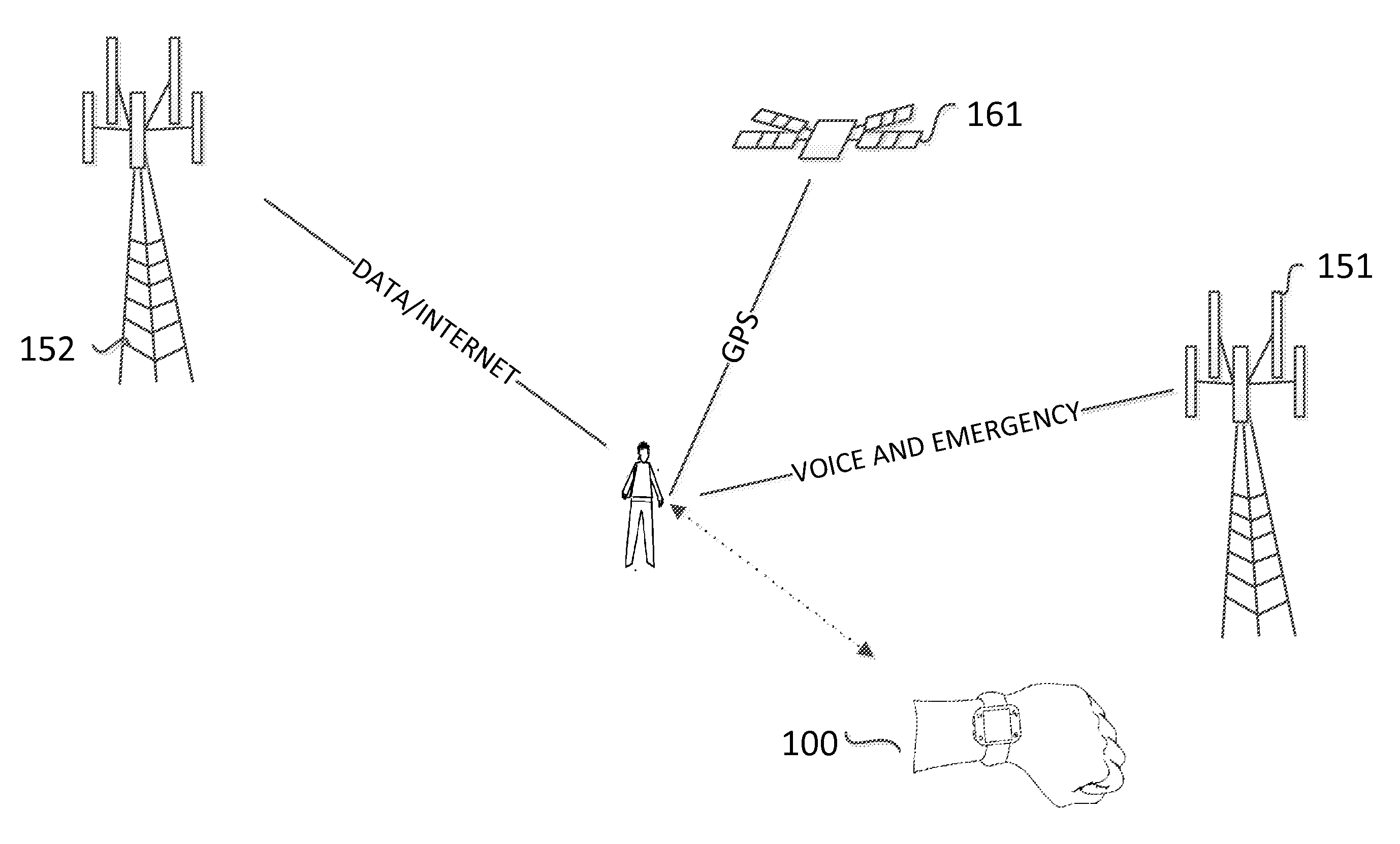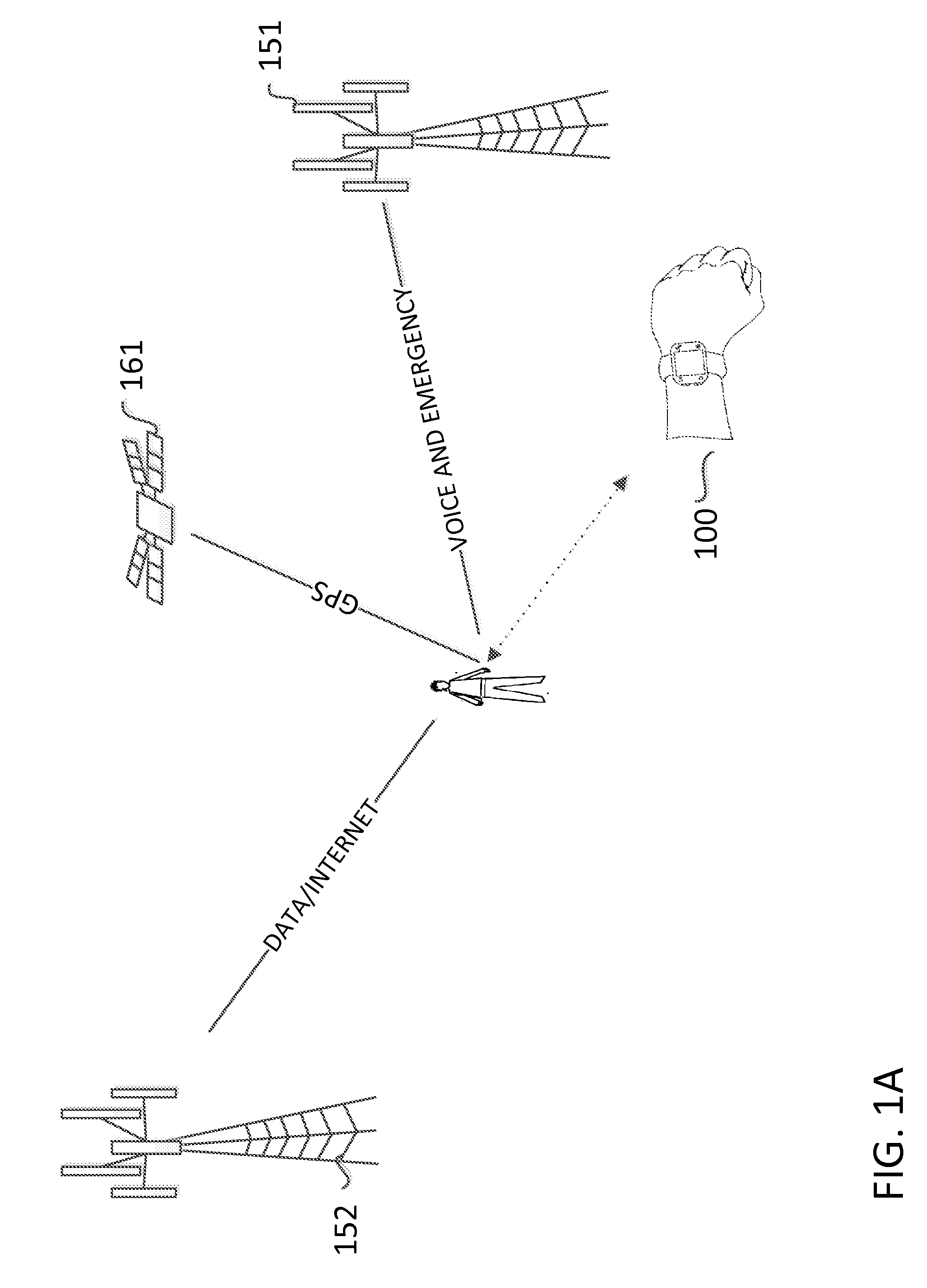Fall detection apparatus with floor and surface elevation learning capabilites
a technology of falling detection and learning capabilities, applied in the direction of vehicle position/course/altitude control, process and machine control, instruments, etc., can solve the problems of detecting falls that are complicated, certain individuals may be vulnerable to unexpected falls, fainting or collapse, etc., to facilitate the monitoring of wearers and facilitate the monitoring of peopl
- Summary
- Abstract
- Description
- Claims
- Application Information
AI Technical Summary
Benefits of technology
Problems solved by technology
Method used
Image
Examples
Embodiment Construction
[0021]This disclosure describes a fall detection and monitoring device (“monitoring device”) configured to be worn on the human body. The device includes sensory, communications, processing and software components that provide functionality for executing any number of the techniques, processes or methods (hereinafter the term “disclosed procedures” will refer to the techniques, processes and methods) which are described in this disclosure. The disclosed features enable the monitoring device to detect falls and inform emergency medical personnel when a fall is detected, without incurring a high incidence of false positive detection.
[0022]The monitoring device may be configured as a wrist or other similar accessory suitable for attachment on the user's arm or at any other location on the body. The monitoring device includes sensors and wireless communication interfaces that gather or receive data used by the monitoring device to monitor the wearer's condition and learning about the en...
PUM
 Login to View More
Login to View More Abstract
Description
Claims
Application Information
 Login to View More
Login to View More - R&D
- Intellectual Property
- Life Sciences
- Materials
- Tech Scout
- Unparalleled Data Quality
- Higher Quality Content
- 60% Fewer Hallucinations
Browse by: Latest US Patents, China's latest patents, Technical Efficacy Thesaurus, Application Domain, Technology Topic, Popular Technical Reports.
© 2025 PatSnap. All rights reserved.Legal|Privacy policy|Modern Slavery Act Transparency Statement|Sitemap|About US| Contact US: help@patsnap.com



